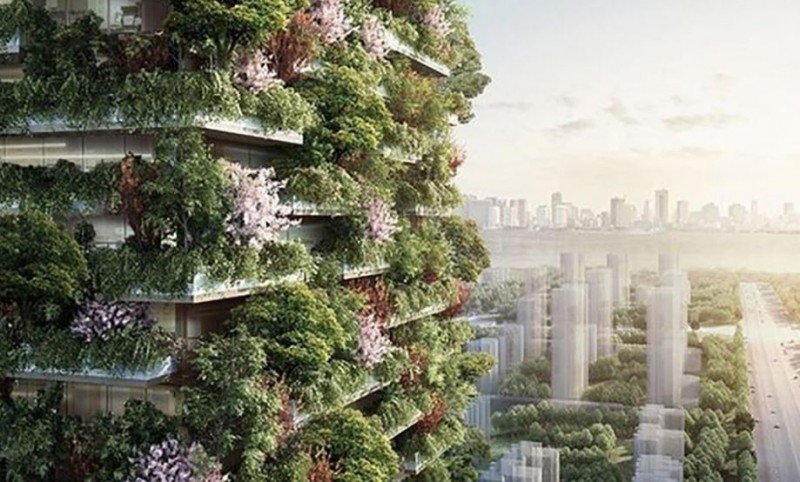
Introduction
Green buildings and sustainable architecture have gained significant attention in recent years due to their numerous benefits for the environment, occupants, and the overall community. With growing concerns about climate change and resource depletion, the adoption of sustainable building practices has become crucial. In this article, we will explore the various advantages of green buildings and sustainable architecture, highlighting their positive impact on energy efficiency, human health, and the planet.
1. Energy Efficiency
One of the primary benefits of green buildings is their superior energy efficiency. These buildings are designed to minimize energy consumption through the use of renewable energy sources, efficient insulation, and advanced technologies. Energy-efficient lighting systems, smart thermostats, and optimized HVAC systems contribute to reduced energy usage, resulting in lower utility bills and decreased reliance on fossil fuels.
2. Environmental Benefits
Green buildings have a positive impact on the environment by reducing carbon emissions and minimizing waste generation. By incorporating sustainable materials and construction practices, these buildings help conserve natural resources and protect ecosystems. Additionally, green roofs and rainwater harvesting systems mitigate stormwater runoff and improve water quality.
3. Improved Indoor Air Quality
Sustainable architecture prioritizes the well-being of occupants by promoting excellent indoor air quality. Low-emission building materials, efficient ventilation systems, and adequate natural lighting contribute to a healthier and more comfortable living or working environment. This focus on indoor air quality reduces the risk of respiratory problems, allergies, and other health issues.
4. Health and Well-being
Green buildings have been found to enhance the overall health and well-being of occupants. Access to natural light, views of green spaces, and biophilic design elements create a positive atmosphere, reducing stress and improving productivity. Moreover, the use of non-toxic materials and proper ventilation minimizes exposure to harmful substances, ensuring a healthier indoor environment.
5. Cost Savings
While the initial costs of constructing green buildings may be higher, they provide long-term cost savings. Energy-efficient designs and sustainable features result in reduced operational expenses, including lower energy bills and maintenance costs. Studies have shown that green buildings offer a significant return on investment through energy savings and improved occupant satisfaction.
6. Increased Property Value
Green buildings are highly desirable in the real estate market, attracting potential buyers and tenants. The focus on sustainability and energy efficiency enhances the property's value and marketability. Additionally, green building certifications, such as LEED (Leadership in Energy and Environmental Design), act as a recognized symbol of quality, further increasing property value.
7. Community Impact
Sustainable architecture extends its benefits beyond individual buildings by positively impacting the surrounding community. Green spaces, pedestrian-friendly designs, and access to public transportation contribute to vibrant and livable neighborhoods. Moreover, green buildings serve as educational platforms, raising awareness about environmental stewardship and inspiring others to adopt sustainable practices.
8. Reduced Carbon Footprint
Green buildings play a crucial role in reducing greenhouse gas emissions. Through energy-efficient designs and renewable energy systems, these buildings help mitigate climate change by minimizing carbon footprints. By decreasing reliance on fossil fuels and embracing sustainable technologies, green buildings contribute to a more sustainable and resilient future.
9. Water Conservation
Water scarcity is a pressing issue in many parts of the world. Green buildings address this challenge by incorporating water-saving measures such as low-flow fixtures, rainwater harvesting systems, and graywater recycling. These strategies promote responsible water use and conservation, reducing strain on local water resources.
10. Enhancing Biodiversity
Sustainable architecture seeks to coexist harmoniously with nature, supporting biodiversity in urban areas. Green roofs, vertical gardens, and native landscaping provide habitats for plants and animals, contributing to urban ecosystems. By preserving and enhancing biodiversity, green buildings create healthier and more sustainable communities.
11. Resilience to Climate Change
Green buildings are designed with resilience in mind, considering the potential impacts of climate change. Through measures such as flood-resistant construction, efficient insulation, and passive design strategies, these buildings can withstand extreme weather events and provide a safe haven during emergencies. Building resilience is essential for the well-being of occupants and the long-term sustainability of communities.
12. Government Incentives
To encourage sustainable development, governments worldwide offer various incentives for green building projects. These incentives may include tax benefits, grants, expedited permitting processes, and density bonuses. Governments recognize the importance of sustainable architecture in mitigating climate change and promote its adoption through supportive policies.
13. Green Building Certifications
Green building certifications serve as a standard for assessing and recognizing sustainable buildings. Certifications like LEED, BREEAM (Building Research Establishment Environmental Assessment Method), and WELL Building Standard provide a framework for evaluating the environmental performance and occupant well-being of buildings. These certifications validate a building's sustainability credentials and enhance its market value.
14. Challenges and Future Prospects
While the benefits of green buildings are substantial, there are challenges to widespread adoption. The initial costs, lack of awareness, and limited expertise in sustainable design and construction pose obstacles. However, advancements in technology, increasing environmental consciousness, and the growing demand for sustainable practices indicate a promising future for green buildings.
Conclusion
Green buildings and sustainable architecture offer a wide range of benefits, including energy efficiency, improved indoor air quality, cost savings, and environmental conservation. By integrating sustainable practices into the built environment, we can create healthier, more resilient communities while reducing our impact on the planet. The adoption of green building principles is crucial for addressing climate change, preserving natural resources, and ensuring a sustainable future for generations to come.
SC Grants Ashish Mishra Extended Interim Bail Amidst Lakhimpur Kheri Violence
Massive Strange Shelf Cloud Appears In Haridwar, Details Inside
Supreme Court's Landmark Decision: Stays Arrest of Lawyer in Manipur